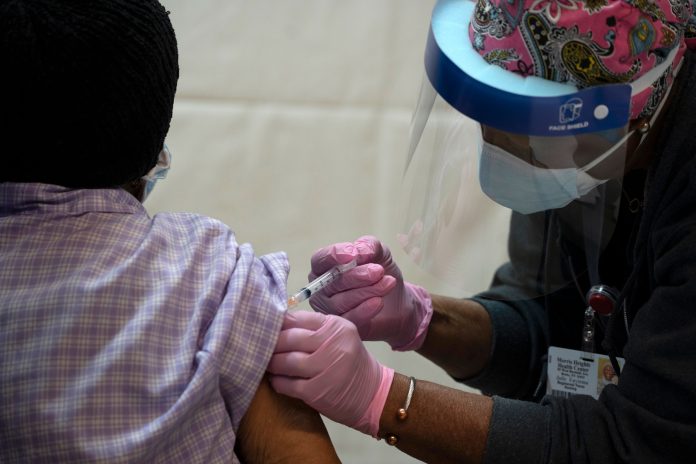
WASHINGTON, D.C. — New claims for unemployment fell last week, the government reported Thursday, the latest sign that the labor market’s recovery, however slow and unsteady, is continuing.
“The numbers look encouraging on the face of it,” said Gregory Daco, chief U.S. economist at Oxford Economics.
He and other analysts, however, cautioned against reading too much into a single week’s changes. The combined average of new state and federal unemployment insurance claims over the first eight weeks of this year is actually slightly higher than it was over the last eight weeks of 2020.
When you take a step back and look at the broader picture, Daco said, “It does reflect an environment in which the labor market remains quite fragile.”
A total of 710,000 workers filed first-time claims for state benefits during the week that ended Feb. 20, a decrease of 132,000, the Labor Department said. In addition, 451,000 new claims were filed for Pandemic Unemployment Assistance, a federal program covering freelancers, part-timers and others who do not routinely qualify for state benefits, a decline of 61,000.
Neither figure is seasonally adjusted. On a seasonally adjusted basis, new state claims totaled 730,000, a decline of 111,000.
On an unadjusted basis, last week’s total was the lowest number of new state claims since the start of the pandemic; seasonally adjusted, it was the lowest since November. The figures are subject to revision as the Labor Department receives more data.
Although initial jobless claims are nowhere near the eye-popping levels seen last spring, they are still extraordinarily high by historical standards. There are roughly 10 million fewer jobs than there were last year at this time.
Coronavirus caseloads have been dropping amid efforts to get vaccines to people who are most vulnerable. But until employers and consumers feel that the pandemic is under control, economists say, the labor market won’t fully recover.
“I can’t imagine we’re going to see big changes in jobless claims for a while,” said Allison Schrager, an economist at the Manhattan Institute.
Much of last week’s decline in applications for state benefits can be traced to big drops in two states, California and Ohio, where there had previously been reports of increased fraud.
There was also a jump in the number of people applying for extended benefits under the federal Pandemic Emergency Unemployment Compensation program, which covers workers who have exhausted their regular insurance.
There is lag in the reporting of those numbers, but drops in one program may reflect movement into a different program, rather than a return to the workforce, said Heidi Shierholz, a senior economist and the director of policy at the left-leaning Economic Policy Institute.
For people who depend on extended government unemployment insurance to pay their bills, the rise in claims is a sign the program is working as intended: that after a brief delay in getting additional benefits approved in December, workers are managing to enroll or re-enroll in the program.
This latest round of jobless assistance, though, is set to expire in mid-March. The $1.9 trillion relief package proposed by President Joe Biden includes an extension of supplemental unemployment benefits for six months.
Leaders at the Federal Reserve and Treasury Department have said the damage to the labor market is much deeper than published government figures reflect. They estimate that the true unemployment rate is closer to 10% than to the 6.3% recorded in the Labor Department’s most commonly cited measure.
Testifying before Congress this week, Jerome Powell, the Federal Reserve chair, said: “The economic recovery remains uneven and far from complete, and the path ahead is highly uncertain.”
“Although there has been much progress in the labor market since the spring, millions of Americans remain out of work,” he added.
Those hardest hit are in the service industry, particularly in restaurants, hospitality, leisure and travel. At the career site Indeed, job postings overall are 5% higher than they were a year ago, with demand greatest for warehouse and construction workers and drivers, said AnnElizabeth Konkel, an economist at the company.
“We need job postings to stay elevated above prepandemic baseline to pull people back into the labor market,” she said.
Copyright 2021 The New York Times Company














